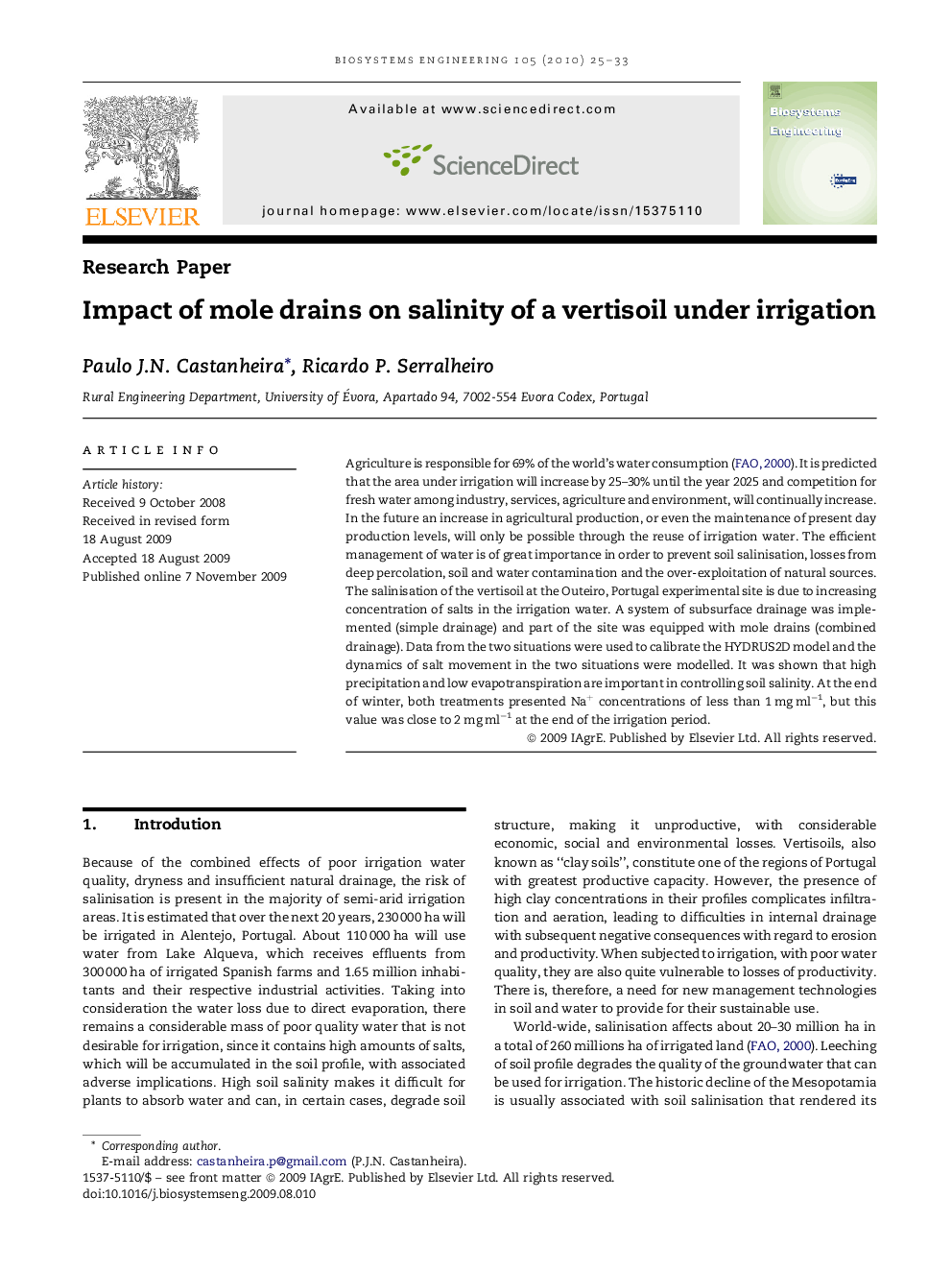| Article ID | Journal | Published Year | Pages | File Type |
|---|---|---|---|---|
| 1712044 | Biosystems Engineering | 2010 | 9 Pages |
Agriculture is responsible for 69% of the world's water consumption (FAO, 2000). It is predicted that the area under irrigation will increase by 25–30% until the year 2025 and competition for fresh water among industry, services, agriculture and environment, will continually increase. In the future an increase in agricultural production, or even the maintenance of present day production levels, will only be possible through the reuse of irrigation water. The efficient management of water is of great importance in order to prevent soil salinisation, losses from deep percolation, soil and water contamination and the over-exploitation of natural sources. The salinisation of the vertisoil at the Outeiro, Portugal experimental site is due to increasing concentration of salts in the irrigation water. A system of subsurface drainage was implemented (simple drainage) and part of the site was equipped with mole drains (combined drainage). Data from the two situations were used to calibrate the HYDRUS2D model and the dynamics of salt movement in the two situations were modelled. It was shown that high precipitation and low evapotranspiration are important in controlling soil salinity. At the end of winter, both treatments presented Na+ concentrations of less than 1 mg ml−1, but this value was close to 2 mg ml−1 at the end of the irrigation period.
